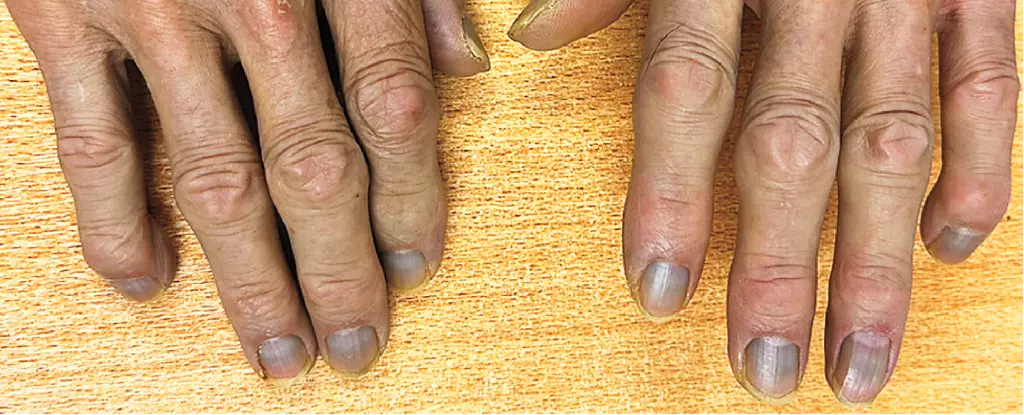In a recent examination involving an 84-year-old man at a Hong Kong hospital, medical practitioners encountered an enigmatic case that underscores the complexities of human physiology and the challenges of clinical diagnosis. Presenting with complications arising from a urinary flow obstruction, the patient bore an unusual grayish coloration of the skin, eyes, and nails that immediately propelled the clinicians into a state of intrigue. This diagnostic puzzle was compounded by the fact that the patient had been exhibiting this atypical ashen hue for five years, prompting a deeper investigation into its etiology.
Upon conducting blood tests, clinicians identified an astonishing concentration of silver in the patient’s bloodstream, measuring more than 40 times the normative levels found in the average individual. The body’s excessive accumulation of silver had precipitated the phenomenon known as argyria—a rare yet known condition characterized by the systemic deposition of silver particles in various tissues. These metallic deposits manifest as the distinctive gray or bluish discoloration observable in many parts of the body, particularly visible in skin and mucous membranes.
Historically, argyria has predominantly presented in individuals exposed to silver through their occupational endeavors, such as miners and artisans, who regularly interacted with the metal. However, in this case study, the patient’s previous occupation as a waiter raised questions regarding the source of silver exposure, paving the way for a meticulous examination of potential origins.
One notable aspect in the pursuit of the root cause of this patient’s condition involves colloidal silver, a substance that has recently gained attention in alternative medicine circles. Despite having no scientific backing for its claimed therapeutic benefits, colloidal silver has permeated the market entailing dietary supplements that purport to enhance the immune system or eliminate toxins from the body. However, the U.S. Food and Drug Administration has noted that these products lack safety and efficacy, illustrating a potential disconnect between consumer trends and scientific consensus.
This leads to an imperative conversation regarding the usage and regulation of silver in non-traditional medical applications. The patient’s condition raises red flags about reliance on alternative treatments, emphasizing the necessity of grounding medical practices in well-researched evidence.
Understanding the mechanics of how silver accumulates within the body elucidates its potential effects on human health. Silver can enter the body via inhalation, dermal absorption, or ingestion. Given its ionic form, it distributes throughout various body systems, ultimately being deposited in tissues wherever ultraviolet (UV) radiation is present. When sky exposure occurs, the silver ions can undergo photoreduction, forming compounds that yield the gray appearance evoked in argyria.
The ramifications of this condition predominantly extend to cosmetic consequences. Clinically, symptoms may remain relatively innocuous; argyria’s most notable impact on health pertains to potential interactions with medications—most significantly antibiotics and thyroid hormone medications like thyroxine. However, for the patient in this scenario, the prognosis looks optimistic from a health standpoint.
Despite extensive investigation, the source of silver exposure in our patient remains unresolved. With neighbors not presenting similar symptoms and occupational exposure being questionable, the medical community now encounters an intriguing dilemma: how does silver predominate in one individual without evident environmental or occupational pathways?
As healthcare professionals continue to monitor the patient’s condition, vigilance in recognizing any changes in silver concentrations will be a critical component of follow-up care. The rarity of argyria, when juxtaposed with the widespread availability of silver-containing products, warrants ongoing research and education.
This case offers a valuable perspective on the intricate interplay between exposure, diagnosis, and potential environmental factors influencing human health. While the physical effects of argyria are primarily superficial, the implications of such discoveries resonate within the healthcare community; they date back to crucial reminders of the importance of evidence-based practice amid a plethora of alternative health trends. Moving forward, this peculiar case of silver saturation will provide clinical insights and foster greater learning opportunities in understanding metal toxicity and the responsibilities of modern medicine.


Leave a Reply